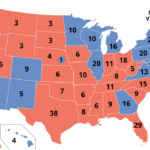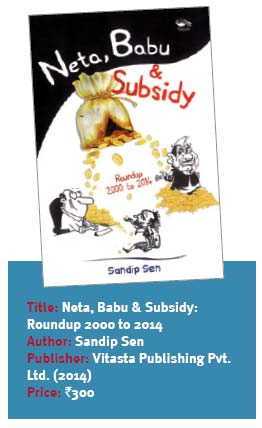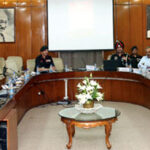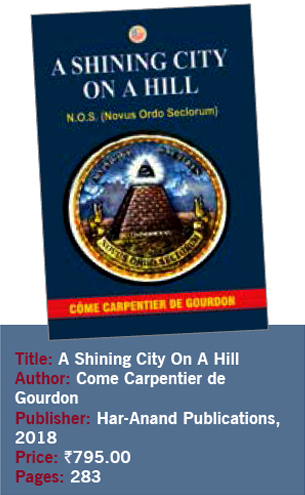- Cover Story
- Governance
- Globe Scan
- Corruption
- State Scan
- Talk Time
- Cover Story
- Governance
- Globe Scan
- Corruption
- State Scan
- Talk Time
Recent Posts
© Copyright 2007 - 2023 Gfiles India. All rights reserved powered by Creative Web INC. Written by K. SUBRAMANIAN
Written by K. SUBRAMANIAN SINCE most of the times we completely identify with our mind and thoughts, we fail to observe and be aware of our thinking pattern. The book, Awakening the Thinking Mind: An Inward Journey, traces the reason why we think, behave and react the way we do and how fear still overrules the human psyche. While associating themselves with their own mind and experiences, the readers can explore and investigate various aspects of nature and inner working of the mind. Readers can, in simple ways, learn and experience the ways to calm their mind, especially under stressed and distressed moments.
SINCE most of the times we completely identify with our mind and thoughts, we fail to observe and be aware of our thinking pattern. The book, Awakening the Thinking Mind: An Inward Journey, traces the reason why we think, behave and react the way we do and how fear still overrules the human psyche. While associating themselves with their own mind and experiences, the readers can explore and investigate various aspects of nature and inner working of the mind. Readers can, in simple ways, learn and experience the ways to calm their mind, especially under stressed and distressed moments.To address common problems like anger, worrying, over thinking and negative thoughts in our day-to-day life, this book can surely act as a guiding tool. The book further explores the central theme of New Age Spirituality that advocates “we are the sole architect of our own life,” besides touching a variety of issues that are central to empowering and awakening of our thinking mind.
by KALYANI JAIN
A saga of scams
I was a little circumspect when asked to write about a review of the book Neta, Babu and Subsidy: Roundup 2000 to 2014, when the opposition Congress party started a war of words with the ruling BJP countering PM Modi’s statement on the poor performance of the Indian economy during the UPA rule. PM Modi had during a nationally televised interview said: “Perhaps I should have published a white paper on the poor state of the economy that I inherited from the UPA”. No other book chronicles the economic decline during UPA better then Neta, Babu and Subsidy, with statistical evidence drawn from RBI, the Government of India data and international and national institutions. The fact that it starts computing data from the Atal Bihari Vajpayee period to the time when the Manmohan Singh government exited from power, shows the slump that the economy went into during the decade.

According to PM Modi, the economy was in dire straits during the Congress rule, which both P Chiidambaram and Anand Sharma of the Congress strongly refuted, almost immediately. Sharma even went on to assert: “The Prime Minister has no understanding of the economy. Former Prime Minister Manmohan Singh had left the economy in a strong condition. The average GDP growth rate was 8.5 per cent during the 10 years of UPA.” The Congressman’s anger was largely due to the statement of Modi in response to a question by Rahul Joshi, Group Editor of Network 18, during a nationally broadcast television interview of the Prime Minister on the September 2, 2016. In the interview, Modi had said: “My first priority after forming the government was that the atmosphere of despair should be removed and to create hope and belief in the country. That doesn’t happen with speeches. Concrete steps need to be taken; it has been shown to be done. And today, after more than two years, I can say with certainty that there is hope, not just in the people of this country, the trust of the entire world in India has grown. There was a time when we were being seen as a sinking ship. In the BRICS, the ‘I’ (representing India) was seen as wobbly. Today it is said that if there is a bright spot, it is India. I think this in itself is a good way to evaluate.”
The book Neta, Babu and Subsidy, written by Sandip Sen, a veteran journalist (now New Media and Projects Editor at Delhi Press), and published by Vitasta Publication, is a tightly written 224-page account of the government in power and is based on data. The data is in form of 30 graphs, few of which are reproduced here.
The Rupee Slump
Not surprisingly, the story starts with the reasons behind the rupee slump of 2013 and gives three graphs from the RBI’s external debt report telling a story of rapid decline. “In 2004 when the UPA government was voted to power, the foreign exchange debt was placed at $112.4 billion, well covered by forex reserves. By March 2013, the external debt had grown by 350 per cent to $390 billion and the forex reserves cover fell by 25 per cent at $292.65 billion. It was not only the rise of foreign debt, but the sharp rise in short-term component of debt that caused the rupee to skid from Rs. 39 a dollar to Rs. 66 a dollar during the intervening decade.” The book reveals how the short-term debt plus ECBs escalated to an extent that 55 per cent of the total debt became repayable during the year 2013, causing the punters to go short on the rupee which saw India’s largest currency slump since the nineties.
This is possibly why PM Modi is so focused on foreign investment and though external debt is still galloping at 10 per cent YOY, the short-term debt has come down to a reasonable 17 per cent.
Galloping Oil Subsidies
There are many other stories from the rise in the CAD to the rampant corruption in the coal sector, but none more scathing than rise of oil and fertilizer subsidies along with imports during the decade. The author says that the Vajpayee regime in 2002 had taken the decision to deregulate petroleum prices and there was no subsidy on petrol and diesel during 2002-03 and 2003-04. It was during 2004-05 that the UPA under Manmohan Singh re-introduced and stepped up subsidies on petrol and diesel.
“Petroleum subsidies that had reduced to around Rs. 5,430 crore in 2002-03 and were restricted to LPG and kerosene during the NDA rule, climbed 20-fold to touch Rs. 103,292 crore in financial year 2008-09 at the end of the UPA I rule,” says the book, giving graphical evidence from the Petroleum Ministry data. By 2013, the oil subsidies had risen 30-fold, causing a net payout of Rs. 750,000 crore with estimated leakage of Rs. 150,000 crore, which the author claims was the biggest contributor to black money generated during the UPA rule.
Fertilizer Import Scam
The book gives circumstantial evidence of several scams during the UPA regime by showing horribly skewed data due to faulty and corrupt decision-making that derailed the Indian economy. The most telling data is that on imports of urea and its subsidy. Urea, in which India was self-sufficient during the Vajpayee rule, suddenly saw rising imports with the advent of the UPA, with the imported fertilizer being heavily subsidised. Given the subsidies on imports, bagging and transportation, it became more profitable to import and less profitable to produce urea domestically, an unfortunate situation which continues even today. This led to India’s domestic production stagnating and India becoming the largest importer of fertilizer globally. In 2007-09, indiscriminate subsidised imports led to sharp international price hike of urea and DAP at a time when the global economy was going into deep recession.

The nexus of the netas (Finance Minister P Chidambaram and the then Fertilizer Minister Ram Vilas Paswan) with the babus (Secretary, Dr JS Sarma, Department of Fertilizer, and other IAS officers) and the private sector (Indian Potash Ltd IPL and IFFCO) run by PS Gahlaut and USA is recounted vividly in the book as decisions get skewed to favour IPL, a privately held company, run by the babus of India. Yes, it is ‘a believe it or not episode’ of corruption and malpractice where babus colluded with netas and businessmen brazenly to siphon off thousands of crores of subsidies for IPL.
The Neta-Babu Collusion with IPL
During 2007-08, when the fertilizer import scam occurred, Vijay Chibber, IAS, Joint Secretary Department of Fertilizer; M Gopal Reddy IAS, MD MP State Co-op Mktg Fed; GS Mangat, IAS, MD Madras Fertilizer; and, Haribhai V Patel, IAS, MD GSFC, were in the board of IPL, a private sector company audited by DelloiteHaskin & Sells. Sarma, IAS, Secretary Department of Fertilizer, issued a circular in May 2007 to the State governments for payment of advances to procurement agencies MMTC/ IPL for fertilizer imports.
“In June 2007, after the approval of the committee of secretaries, which comprised of all bigwigs of UPA babudom, the Department of Fertilizer authorized IPL to import the entire DAP requirement that was to be subsidised for domestic supply”. The circular made IPL virtually a monopoly buyer for India and set the international markets on fire as never before. Within a few weeks, the international market price of DAP doubled to well above $500 per MT. For the whole of 2008, the price of DAP kept rising as IPL kept on buying through a host of agents close to New Delhi’s Neta, Babu combine”.
During 2006 and 2007, before Sarma issued the circular to the State governments, the turnover of IPL was Rs. 6,125 crore and the debt equity ratio of the company was a lowly 2:1. Following the largesse of the UPA government and interest-free advances, the IPL turnover jumped five-fold to Rs. 32,383 crore and the debt-equity ratio skyrocketed to 15:1 in the next two years. The situation has not improved much in the fertilizer sector and even the Modi government is unwilling to investigate the scam or initiate reforms. This is possibly because not only Chidambaram but also Paswan, the all-powerful food and civil supplies minister today, and the babudom deeply involved in the scams would get exposed.
The book has no friends. It exposes not only many UPA ministers, but also Sonia’s favored NGO community funded by Canada and the US to stop mining in India, oil barons, mining mafia and fertilizer importers. It highlights over a dozen scams that took place across various sectors and gives the circumstantial evidence of the decline of the economy sector by sector, be it mining or rural development. It is a must read for IAS officers too, as it shows that without the complicity of the bureaucracy, the UPA could not have pulled of the scams or ruined the healthy economy that Vajpayee had bestowed.
by NARENDRA KUMAR
Inspiring tales of initiative
Women of Kuwait: Turning Tides is the story of Kuwaiti women who dared pursue their dreams at times against immense odds and made far-reaching contributions to the evolution of Kuwait as a modern State.
This book features prominent Kuwaiti women from the fields of politics, diplomacy, education, sports, art, and business, who break stereotypes of Arab women as subservient and shackled. In Women of Kuwait: Turning Tides, the author, Chaitali B Roy, delves into the lives of these women and tries to find out what makes them so strong and successful. She follows their inspiring journey to the top of their chosen fields.

Chaitali has her own share of laurels. She has been active in print media and radio broadcasting in Kuwait and India for more than 20 years. For the Arab Times, Kuwait’s premier English daily, and for Radio Kuwait Foreign Service she has done extensive research on a wide range of subjects, including women’s issues, heritage, health, education, Islamic art and culture, and socio-cultural aspects of the Gulf region. She was awarded a media fellowship for her work on Kuwait by East-West Center, an internationally recognised organization that fosters better understanding between the United States and countries with major Muslim populations. Passionate about advocating multi-culturalism, Chaitali has tried to find connections between cultures by actively curating and promoting cultural events on known platforms.
Some of the achievers featured in Turning Tides, like Sara Akbar, Dr Masouma Al Mubarak, and Ambassador Nabeela Al Mulla are well-known names, both in Kuwait and elsewhere in the Middle East. But there are some like Dr Haifa Al Ajmi, the first woman to get a PhD in Heavy Oil Management in the GCC. She is a Bedouin woman who has, with the active support of her family, risen above her circumstances to pursue her ambitions. These are stories that inspire and need to be told. As a journalist, and as a woman, Chaitali wanted to capture the stories of some of these women in a book. Her intention was to preserve these narratives of courage and to break stereotypes about Kuwaiti women in particular and Arab women in general. And that she has achieved to a large extent.
While writing about these women in Kuwait, the author realised that many of the challenges they face are global in nature while cultural conservatism poses other dilemmas. Their stories are a must-read, whether you’re a resident of Kuwait familiar with the culture or an outsider for whom the lifestyle of women in this part of the world is a mystery.
These women are not afraid of challenges and hard work. Take Sara Akbar for example. She is a leading name in the field of oil and energy who began her career as a chemical engineer with the Kuwait Oil Company. When Saddam Hussein retreated from Kuwait, he burnt the oil wells—and, it was Akbar who urged and persuaded the management to allow her to join the fire-fighting operations, which she did.
Many of the women Chaitali has written about have made history, serving as the first women in a large number of different positions. There is HE Nabeela Al Mulla, first woman ambassador from the GCC, first woman from the Middle East and South Asia to chair the board of the International Atomic Energy Agency, and first Arab woman to lead her country at the UN. Dr Masouma Al Mubrak served as Kuwait’s first female cabinet minister and was one of the first three Kuwaiti women to become a parliament member. The individual journeys of women featured in the book are representative of a larger picture. Their lives present interesting insights into a much misunderstood society. The book is an important document of the Arabian Gulf culture and the women there who, undeterred by socio-cultural and political barriers, realised their dreams.
by NARENDRA KUMAR
Emergency and the cold war
The Nation Declassified: India and the Cold War World is the first book that comprehensively reveals the secret history of how India’s Prime Ministers, their closest advisers, diplomats, intelligence agencies and military, coped with transformations in world order through the cold war era. Uncovering thousands of pages of top secret declassified documents, India’s first book on Cold War history, The Nation Declassified uncovers records of discussions between Indian Prime Ministers and world leaders, diplomatic and defence delegations and reconstructs tightly guarded secrets of India’s strategic nuclear and space programme from Homi Bhabha to the underground tests of 1998.

The book also makes a reference to the Emergency and Cold War and the attitude of the two superpowers, the US and USSR, towards it. According to the author, both the US and USSR extended support and understanding to Indira Gandhi during the Emergency period. USSR did so because their leadership had developed a sort of personal bond with her and her advisers as well as her direction of policy, whereas the US could do very little and also India did not quite interest them in that decade of détente as much as it had during 1962-63 when cold war was at its peak. In talks with Kissinger, the MEA file informs us, the ‘Emergency’ was explained by Indian officials as aimed at extra constitutional challenge “by a motley group of reactionary elements belonging to extreme left and right, including communal and sectarian elements”. The State Department officials even acknowledged that economic growth had been good even after the announcement of Emergency.
Records also tell us of meeting between PM’s special envoy DP Dhar and Soviet Foreign Minister Gromyko at Moscow on February 10, 1975. Here, Dhar spoke of India’s internal politics wherein “neo-fascist and reactionary groups” were taking political advantage of the economic situation. Dhar added that all right-wing strands had joined the JP movement. He also said the PM was confident about the elections, which were to be held in a years’ time.
Another MEA file ‘brief’ reveals discussions between Kewal Singh and Firyubin on November 25. According to the brief, the Soviets were told that Emergency had “reinvigorated national discipline, enthusiasm and devotion to duty”. It had also discredited and exposed the ‘extreme right and extreme left’. Singh described emergency as “a very courageous decision by the Prime Minister”. Firyubin conveyed ‘whole-hearted support’ to the Indian government saying, “the real meaning of democracy means that government should work for the interest of the people…that kind of democracy was real democracy”. Firyubin described the Jana Sangh as a fascist group.
Recent Posts
Related Articles
Book ReviewA life in secret
Written by Abhilash Khandekar RAM Nath Kao (1918-2002) is not one of those...
ByAbhilash KhandekarMarch 4, 2020Book ReviewFrom behind the steel frame
Written by K. SUBRAMANIAN THE British East India Company came to this subcontinent...
ByK. SUBRAMANIANMay 8, 2019Book ReviewClassified reality
Written by Narendra Kumar IN the era of star whistleblowers such as Julian...
ByNarendra KumarJuly 16, 2018Book ReviewSpies who came in from the cold
Written by Shubhabrata Bhattacharya THE book, jointly authored by India’s former Indian Research...
ByShubhabrata BhattacharyaJune 20, 2018 - Governance
- Governance
























































 S
S








